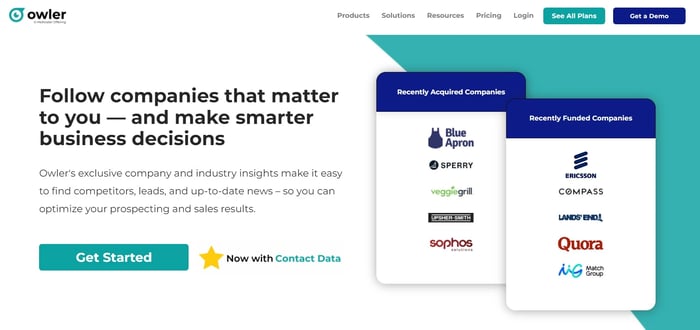The Advantages of Using a Cloud-Based Database Provider
The Advantages of Using a Cloud-Based Database Provider
Blog Article
Key Functions to Look for When Choosing a Database Carrier
Picking a database provider is a vital choice that can substantially affect your company's information and operations administration technique. Among the vital features to consider are scalability choices, which make sure that your system can adjust to growing demands.
Scalability Options
When selecting a database service provider, comprehending scalability alternatives is critical to making sure that the selected remedy can suit future development. Scalability refers to the ability of a database system to increase its capacity and performance in feedback to boosted demand. There are two main sorts of scalability: straight and upright.
Vertical scalability, or "scaling up," involves enhancing a solitary server's sources, such as CPU, RAM, or storage space. This technique can be cost-effective and simple for smaller sized applications however might reach a limit where further upgrades are as well costly or impractical.
Horizontal scalability, or "scaling out," includes adding more web servers to disperse the lots. This approach enables greater adaptability and can suit significant boosts in data volume and user web traffic (database provider). It is particularly beneficial for cloud-based database services that can dynamically designate sources based upon demand

Safety Actions
%20%5B%2B%20FR%2C%20ES%20and%20DE%20variations%5D/B2B%20data%20providers/EN_B2B-data-providers-resource-card.png)
When examining safety actions, consider the implementation of security protocols (database provider). Data-at-rest and data-in-transit security are necessary to make certain that delicate details remains secured, also in case of a safety breach. Additionally, search for providers that supply strong authentication devices, such as multi-factor verification (MFA), to additionally enhance accessibility control
Routine security audits and conformity with market standards, such as GDPR or HIPAA, are indicative of a supplier's commitment to information protection. In addition, ask about their incident response plan; a robust strategy can decrease the impact of any type of prospective protection case.
Efficiency Metrics
Examining efficiency metrics is crucial for companies to make certain that their chosen data source carrier satisfies functional requirements. Secret performance metrics consist of feedback scalability, throughput, and time, which jointly identify the effectiveness of database procedures under varying loads.
Reaction time is important, as it reflects just how swiftly the data source can refine questions and return outcomes. Organizations should seek metrics that suggest typical feedback times during optimal and off-peak hours. Throughput, often gauged in deals per 2nd (TPS), offers understanding right into the data source's ability to manage high volumes of requests without performance deterioration.
Scalability assesses the data source's capability to expand with the company's demands. A robust data source supplier ought to show horizontal and vertical scaling abilities, permitting for seamless adjustments as needs change. Additionally, understanding latency, especially in distributed systems, can assist organizations assess the responsiveness of the data source across various geographical locations.
Client Support
Reliable consumer assistance is a foundation of reliable database monitoring, providing companies with the support needed to solve problems and maximize performance. When picking a data source supplier, evaluating the degree of consumer support they provide is crucial. A robust assistance system need to include multiple channels of communication, such as phone, e-mail, and live chat, making sure that users can access help whenever they require it.
Additionally, responsive support teams that are offered 24/7 considerably improve the reliability of the data source solution. Motivate feedback times and effective resolution of issues can dramatically minimize downtime and increase overall performance. It why not find out more is likewise useful to consider the availability of specialized support personnel, that can use tailored help based upon an organization's specific needs.
Pricing Structure
When taking into consideration a data source service provider, the prices framework is a critical element that can substantially influence an organization's spending plan and general method. A flexible and transparent rates design is crucial for aligning the database costs with business requirements - database provider. Organizations needs to evaluate whether the prices is based on consumption, per individual, or a flat rate, as each model can yield different financial effects over time
It is essential to analyze any kind of added expenses related to the service provider's solutions, such as information storage More Help space fees, transaction costs, and assistance charges. Some providers might use tiered rates, permitting scalability as the company grows, while others might enforce stringent limitations that can come to be pricey as data needs raise.
Additionally, organizations should take into consideration the lasting worth of the data source solution. While reduced initial costs can be appealing, they may not account for future upgrades, upkeep costs, or integration expenses. Conducting a detailed cost-benefit evaluation will certainly assist determine the most appropriate pricing framework that stabilizes efficiency, scalability, and support, eventually making certain that the chosen data source company aligns with the company's operational and economic objectives.
Conclusion
In final thought, picking a database company necessitates careful consideration of numerous essential features. Assessing efficiency metrics makes it possible for the identification of effective databases, and accessible consumer support improves the general individual experience.
Picking a data source service provider is an important decision that can significantly affect your organization's data and operations monitoring approach.When selecting a data source company, comprehending scalability alternatives is crucial to making certain that the selected service can accommodate future development. When selecting a database company, assessing the level of customer assistance they supply is essential.When taking into consideration a data source provider, the prices structure is a critical variable that can dramatically influence an organization's budget and general approach. Conducting an extensive cost-benefit evaluation will help determine the most ideal pricing structure that balances scalability, assistance, and performance, ultimately making certain that the picked data source company straightens with the organization's functional and economic goals.
Report this page